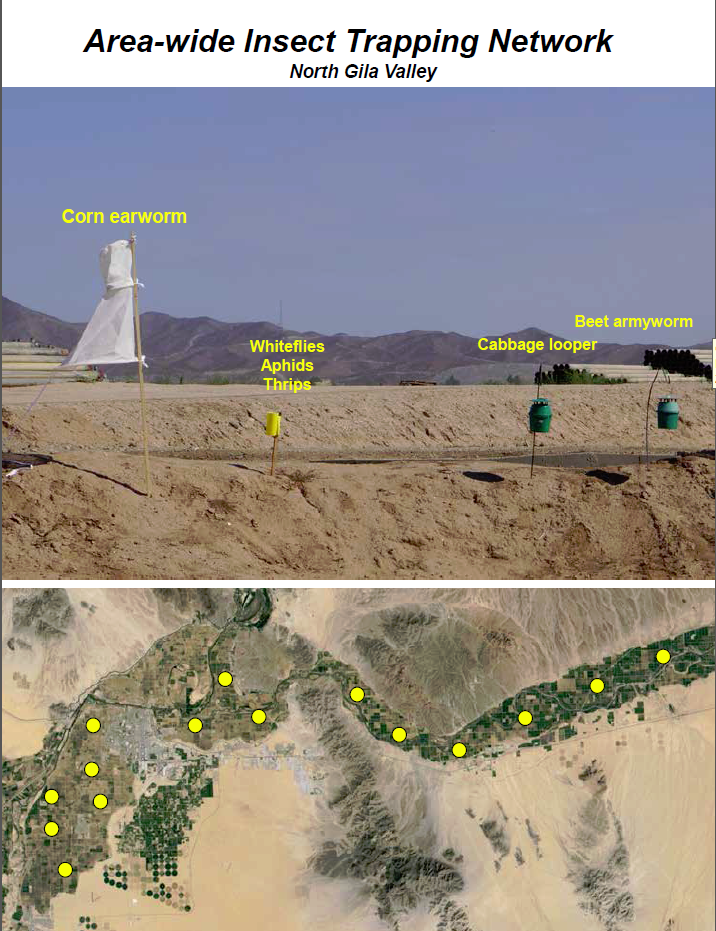
|
|
|
|

|
|||
|
|
|||
|
Historically, beet armyworm and cabbage looper are the most important pests of produce
during September and October based on our annual Lettuce Insect Losses surveys.
Now with produce planting well underway, it is no surprise that worms are everywhere,
particularly in Dome Valley where reports of heavy armyworm have been numerous over
the past week or so. Corn earworm larvae have also been found in a number of lettuce
fields. Here at the Yuma Ag Center, one can easily find newly new egg masses and
neonate beet armyworm larvae on 8 day old lettuce and broccoli stands. Similarly,
cabbage loopers are beginning to show up and their populations will likely increase.
Remember, temperatures drive larval development and adult activity, particularly
when night time temps remain high (in the mid-70s or higher). Moths will activily
oviposit when evenings are warm and winds are light. Don’t be fooled by this recent
break in the weather. As long as the average temperature remains around 80-85°F,
worms should be active at damaging levels. Those ideal conditions are consistent
with the weather forecast for the next 10 days (highs in the mid-thigh 90’s and
lows in the 70’s). Fortunately, there are a number of very effective insecticides
that can be applied as stand-alone foliar products that provide effective residual
control of both of these lepidopterous species. Radiant, Proclaim, Intrepid, Avaunt
and any one of the Diamide products (Coragen, Belt, Voliam Xpress and Vetica) can
provide good knockdown and extended residual control of armyworms and loopers. A
newly registered diamide, Exirel provides both worm and whitefly activity. Over
the past few years, our research trials have demonstrated that these products provide
comparable control on lettuce and cole crops. Of course, residual control will often
depend on the rate applied. In general, the higher the rate, the longer the residual,
but this will also depend on how fast the plant is growing and plant size. Before
selecting a product for Lep control, be conscious of products (chemistries) previously
used on the crop. Avoid using products with the same mode of action more than twice
on any given field. More information on the insecticides available for effective
control of beet armyworm and cabbage looper can be found in this document:
Lepidopterous Larvae Management in Desert Produce Crops.

Remember, When in Doubt . . . . . “SCOUT”
Click picture to listen to John’s update
To contact John Palumbo go to: jpalumbo@ag.arizona.edu |
|||
| Back | |||
|
For questions or comments on any of the topics please contact Marco Pena at the Yuma Agricultural Center.
|
|||
|
Home |
Cotton | Veggies |
Forages | Grains
| Citrus |
Crop x Crop Insects | Diseases| Weeds | Pesticides | Economics | News | Weather | Research | Photos | Contacts | General Info. Copyright © 2001 University of Arizona, College of Agriculture and Life Sciences Webmaster: Al Fournier (acis@ag.arizona.edu) |
|||
